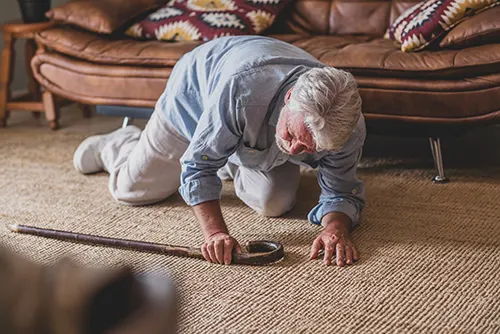Tips for Balance Enhancement and Fall Risk Avoidance

Greetings once again from the blog team here at Ishitani Health Center. As a holistic wellness service team, we offer a wide range of health-related services to include chiropractic care, acupuncture, physical therapy, pediatric chiropractic, and many other wellness and health care services.
We also are invested and deeply committed to public education in our endeavor to promote healthy, happy, and pain-free quality of life throughout our community. Today we’re going to discuss both the threat and repercussions of unhealthy balance, falls, and practical proactive measures that you can and should take.
Importance of balance in daily activities
Number of falls
In the United States, about 14 million older adults, or one in four, fall each year. The percentage of falls increases with age, from 28–35% for people aged 65 and older to 32–42% for those over 70.
Fall-related injuries
About 37% of falls result in an injury that requires medical treatment or limits activity for at least one day. Falls are the leading cause of injury for older adults.
Fall-related deaths
In 2021, nearly 39,000 older adults died from unintentional falls. The fall-related death rate for older adults varies by state and sex
Improve balance, prevent falls, and promote overall health
Understanding Balance - What is Balance?
Balance is the ability to maintain a stable and controlled position, whether standing still or moving. It involves coordinating various body systems, including:
- Vestibular System: Located in the inner ear, it helps detect changes in head position and movement.
- Proprioception: This is the body's sense of its position and movement in space, relying on sensors in muscles and joints.
- Vision: Sight helps orient the body in relation to the environment and can provide important cues for maintaining balance.
The role of the vestibular system, proprioception, and vision
Why is Balance Important?
It impacts mobility and independence. Balance is essential for everyday activities, such as walking, climbing stairs, and preventing falls, particularly as we age. Good balance allows individuals to perform tasks safely and confidently.
Stand and balance on one leg 30 seconds - Connection between balance and fall risk
The connection between balance and fall risk is significant, especially for seniors. Here’s how they are related:
- Loss of Balance: A decline in balance ability can lead to an increased risk of falling. When balance is compromised, even minor missteps can result in a fall.
- Age-Related Changes: As people age, factors like muscle weakness, joint stiffness, and sensory decline (such as vision and proprioception) can affect balance, making falls more likely.
- Environmental Factors: Poor balance can make individuals more susceptible to environmental hazards (e.g., uneven surfaces, obstacles) that can lead to falls.
- Health Conditions: Conditions like arthritis, neuropathy, and dizziness can negatively impact balance, thereby increasing fall risk.
- Preventive Measures: Improving balance through exercises and training can significantly reduce fall risk. Strengthening muscles and enhancing coordination help maintain stability.
In summary, good balance is crucial for preventing falls, and addressing balance issues can significantly enhance safety and independence in seniors.
Fall Risk Factors
Common Risk Factors for Falls. Fall risk factors can be categorized into several groups, including intrinsic (personal) and extrinsic (environmental) factors. Here are some key factors in each category:
Intrinsic Factors
- Age: Older adults are at higher risk.
- Health Conditions: Chronic conditions like arthritis, heart disease, or diabetes can affect balance and strength.
- Medications: Certain medications (e.g., sedatives, antidepressants) can cause dizziness or drowsiness.
- Vision Problems: Impaired vision or untreated eye conditions increase fall risk.
- Cognitive Impairments: Conditions like dementia can affect judgment and awareness of surroundings.
- Balance and Gait Issues: Weakness or instability can lead to falls.
- Previous Falls: A history of falls increases the likelihood of future falls.
Extrinsic Factors
- Home Environment: Clutter, poor lighting, loose rugs, and lack of handrails can create hazards.
- Outdoor Conditions: Uneven sidewalks, wet surfaces, and poor weather conditions can increase fall risk.
- Footwear: Inappropriate or worn-out shoes can affect stability.
- Assistive Devices: Improper use or lack of assistive devices (like canes or walkers) can lead to falls.
- Social Factors: Isolation or lack of social support may contribute to increased risk.
Benefits of Fall Prevention
Why Focus on Fall Prevention? Fall prevention in seniors offers numerous benefits, including:
- Reduced Injury Risk: Preventing falls minimizes the likelihood of serious injuries, such as fractures or head trauma, which can significantly impact quality of life.
- Increased Independence: By reducing the risk of falls, seniors can maintain their independence and continue to perform daily activities without assistance.
- Enhanced Confidence: Knowing that they have taken steps to prevent falls can boost seniors' confidence in their ability to move around safely.
- Improved Physical Health: Engaging in fall prevention activities, such as exercise and balance training, enhances overall physical fitness, strength, and flexibility.
- Better Mental Health: Reducing the fear of falling can lead to decreased anxiety and improved mental well-being, encouraging seniors to participate in social activities.
- Cost Savings: Fewer falls can lead to lower healthcare costs related to hospital visits, rehabilitation, and long-term care.
- Social Engagement: Seniors who feel safe and confident are more likely to engage in social activities, promoting emotional well-being and reducing isolation.
Overall, effective fall prevention strategies contribute to a higher quality of life for seniors, enabling them to live more active and fulfilling lives.
Assessment of Balance (We can help you here!)
Balance Assessments
- Overview of tests (e.g., Timed Up and Go, Berg Balance Scale)
- Importance of knowing your baseline
- Tailoring interventions based on individual needs
Strategies for Improving Balance
Physical therapy: Assess and work on balance/strength
Balance Exercises
- Examples: Heel-to-toe walk, single-leg stands, tai chi
- Importance of consistency and progression
Strengthening Exercises
- Focus on core, legs, and overall stability
- Safe practice guidelines
Home Safety Tips
Here are some essential home safety tips for fall prevention in seniors:
- Clear Clutter: Remove unnecessary items from floors, stairs, and pathways to create a clear walking space.
- Secure Rugs and Carpets: Use non-slip mats or tape to secure rugs and carpets to prevent tripping. Consider removing loose rugs altogether.
- Improve Lighting: Ensure all areas of the home, especially hallways and staircases, are well-lit. Use bright bulbs and consider motion-activated lights.
- Install Grab Bars: Place grab bars in bathrooms near toilets and in the shower or bathtub to provide support when getting in and out.
- Use Non-Slip Mats: Place non-slip mats in the bathroom and kitchen to reduce the risk of slipping on wet surfaces.
- Maintain Stair Safety: Ensure stairways are well-lit, have sturdy handrails on both sides, and are free from clutter. Mark the edges of steps with bright tape for visibility.
- Organize Frequently Used Items: Keep frequently used items within easy reach to avoid the need for using stools or ladders.
- Wear Appropriate Footwear: Encourage wearing shoes with non-slip soles and avoid slippers or socks that can increase the risk of slipping.
- Regularly Check Vision: Ensure regular eye exams to maintain good vision, which is crucial for balance and spatial awareness.
- Use Mobility Aids: If needed, encourage the use of canes or walkers to enhance stability and balance while moving around.
Community Resources
- Support and Resources
- Local exercise classes for seniors
- Access to physical therapy services
- Information on home safety assessments
Conclusion - Key Takeaways
- Importance of balance and proactive measures
- Commitment to regular exercise and safety practices
- Stay informed and engaged with community resources
We invite you to contact our Fort Lee’s shitani Health Center today to embark on your journey towards a healthier, more safe, and more active tomorrow. Thank you!
Dr. Augusto Reynoso PT, DPT, ATC
Ishitani Health Center






